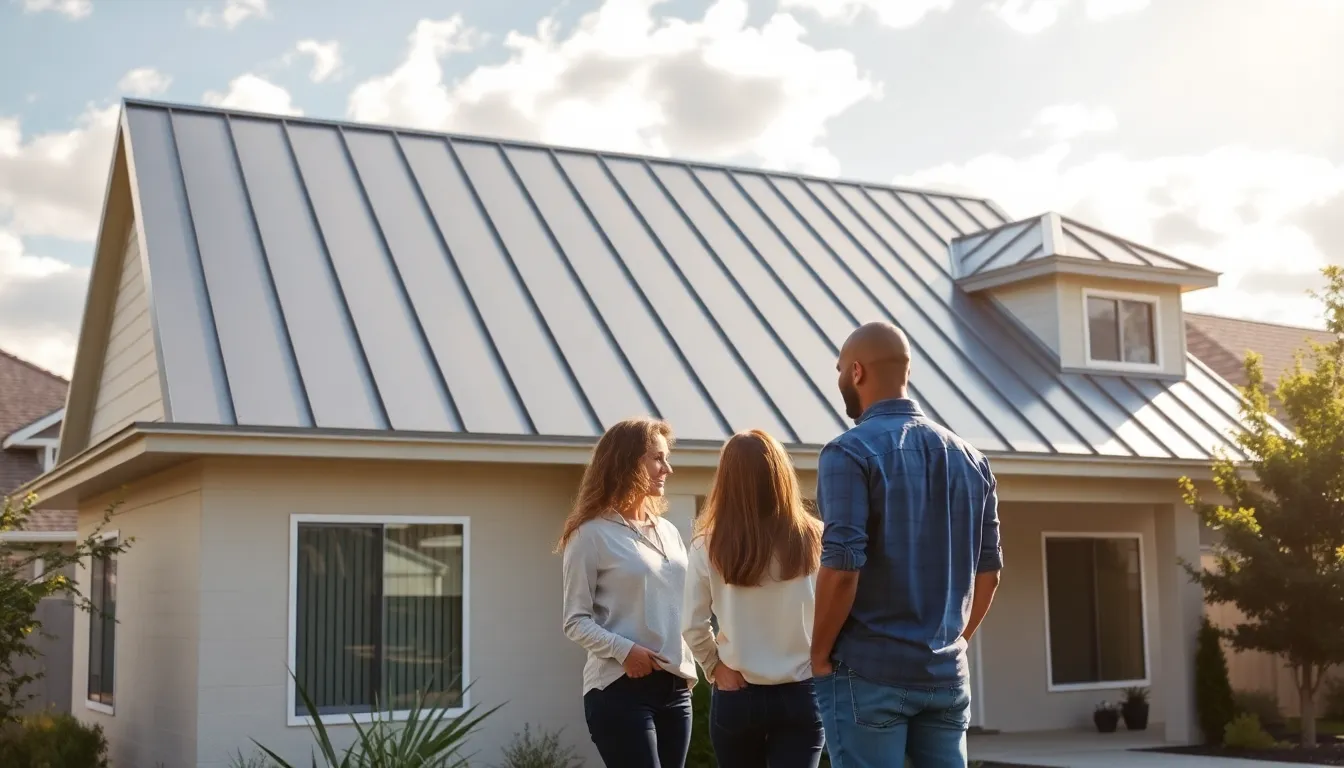Let’s face it: when it comes to roofing options, most people envision that classic leaky roof scenario. But why settle for leaks when you can have sleek, durable vinyl roofing? In this comprehensive guide, homeowners will discover everything they need to know about this roofing option, from its benefits to installation tips. So grab a cup of coffee, sit back, and prepare to become a vinyl roofing expert, fun and knowledge are just a read away.
Table of Contents
ToggleWhat Is Vinyl Roofing?

Vinyl roofing is a synthetic material made primarily from polyvinyl chloride (PVC). Often used in commercial and residential buildings, it has gained popularity due to its versatility, affordability, and robust performance. Unlike traditional roofing materials, vinyl provides a unique solution that combines durability with a lightweight design, making it an attractive choice for many homeowners. Essentially, it’s like the Swiss Army knife of roofing, multi-functional and ready to tackle all sorts of weather challenges.
Benefits of Vinyl Roofing
Opting for vinyl roofing brings numerous advantages.
1. Durability
One of the most significant benefits is durability. Vinyl roofs can withstand harsh weather, including heavy rain, snow, and intense UV rays. This resilience ensures that they can last for decades without a major overhaul.
2. Low Maintenance
Homeowners often appreciate the low-maintenance nature of vinyl. It resists mold, algae, and debris which translates to less time spent on upkeep. Say goodbye to those weekend ladder climbs.
3. Energy Efficiency
Sure, everyone loves a good insulation story. Vinyl roofing materials can contribute to energy efficiency, helping to keep homes cooler in the summer and warmer in the winter. Who doesn’t want lower energy bills?
4. Aesthetic Variety
Another perk is the aesthetic versatility. Vinyl roofing comes in a variety of colors and textures, meaning homeowners can achieve the look of traditional materials without sacrificing modern technology.
Types of Vinyl Roofing Materials
When it comes to vinyl roofing, it’s not a one-size-fits-all situation. Here are the main types of vinyl roofing materials:
1. PVC Roofing
PVC roofing is particularly impressive when it comes to its waterproofing abilities. It often comes in large sheets, making installation quicker and simpler.
2. TPO Roofing
Thermoplastic Olefin (TPO) is another popular type. Known for its energy efficiency, TPO is also a cost-effective option for those looking to save dollars while still securing a durable roof.
3. Modified Bitumen
This material melds traditional roofing methods with modern technology. It combines bitumen with modifiers that improve its performance, resistance, and lifespan.
Installation Process of Vinyl Roofing
Installing vinyl roofing may sound daunting, but understanding the process makes it manageable. Here’s a quick step-by-step overview:
1. Preparation
First, assess the roof’s structure to ensure it can support the vinyl material. If you’re retrofitting over an existing roof, this is the time to check for damage.
2. Underlayment
Lay down an underlayment, which serves as a protective barrier, improving insulation and moisture control.
3. Installation of Sheets
Align and affix the vinyl sheets carefully. Use appropriate adhesives for sealing the seams to prevent water from seeping underneath.
4. Final Inspection
Once installed, inspect every aspect of the roof to ensure that all parts are securely attached and functioning as intended. This final checklist can save headaches down the road.
Maintenance Tips for Vinyl Roofing
Taking care of vinyl roofing requires minimal effort. Here are some tips to keep it looking fresh:
1. Regular Cleaning
Conduct regular cleanings to prevent dirt buildup. A quick rinse with a hose can often do the trick.
2. Check for Damage
Periodically inspect the roof for any signs of damage or wear. Look for tears or punctures.
3. Trim Overhanging Branches
If you have trees nearby, make sure to trim overhanging branches. This helps to prevent scratches and damage during storms.
Cost Considerations for Vinyl Roofing
When thinking about vinyl roofing, costs can vary significantly based on several factors:
1. Material Quality
Higher-quality materials generally come with a heftier price tag, but they often provide better durability and longevity.
2. Labor Costs
Be sure to factor in labor costs, as installation fees will vary by region and contractor experience. It’s wise to shop around for quotes.
3. Long-Term Savings
While initial costs are a consideration, think about long-term savings. Vinyl roofing can reduce energy bills and maintenance needs, making it a smart investment.





